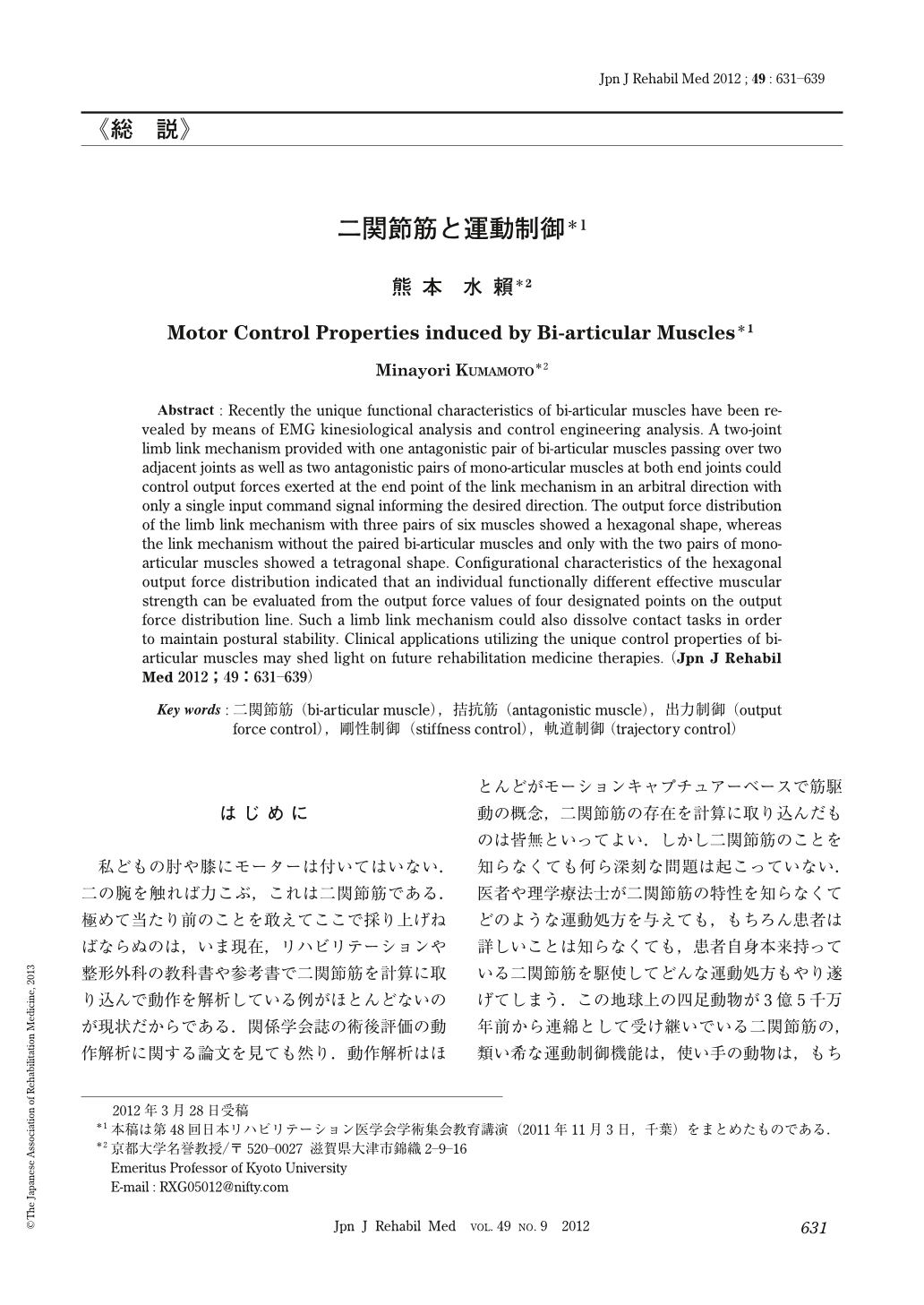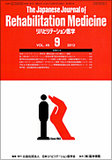Japanese
English
- 販売していません
- Abstract 文献概要
- 1ページ目 Look Inside
- 参考文献 Reference
はじめに
私どもの肘や膝にモーターは付いてはいない.二の腕を触れば力こぶ,これは二関節筋である.極めて当たり前のことを敢えてここで採り上げねばならぬのは,いま現在,リハビリテーションや整形外科の教科書や参考書で二関節筋を計算に取り込んで動作を解析している例がほとんどないのが現状だからである.関係学会誌の術後評価の動作解析に関する論文を見ても然り.動作解析はほとんどがモーションキャプチュアーベースで筋駆動の概念,二関節筋の存在を計算に取り込んだものは皆無といってよい.しかし二関節筋のことを知らなくても何ら深刻な問題は起こっていない.医者や理学療法士が二関節筋の特性を知らなくてどのような運動処方を与えても,もちろん患者は詳しいことは知らなくても,患者自身本来持っている二関節筋を駆使してどんな運動処方もやり遂げてしまう.この地球上の四足動物が3億5千万年前から連綿として受け継いでいる二関節筋の,類い希な運動制御機能は,使い手の動物は,もちろんヒトも含めて,理屈など知らなくても関係なく,素晴らしいパフォーマンスを披露してくれている.この限りでは問題はなかったのだが,二関節筋の特性が明らかになった上で改めて従来の参考書類や論文を見直してみると二関節筋の特性を反映させた論説はほとんどないことに気付かれるはずである.特に,理学療法士作業療法士国家試験出題基準が作成され,重要事項として生体力学の基礎,「身体とてこ」の解説をみると,関節トルク力学体系が如何に深く浸透しているか思い知らされると共に,避けて通れぬ二関節筋の理論体系の理解の普及を急ぐ必要性を痛感する.さらに工学技術の進歩は関節モーター駆動のパワースーツを患者に装着しようとしている.制御機能特性の違う装具が人体にどのような影響を与えるのか詳しく検証されているのであろうか.二関節筋の存在意義について最近の知見を紹介し,課題点を整理しておきたい.
Abstract : Recently the unique functional characteristics of bi-articular muscles have been revealed by means of EMG kinesiological analysis and control engineering analysis. A two-joint limb link mechanism provided with one antagonistic pair of bi-articular muscles passing over two adjacent joints as well as two antagonistic pairs of mono-articular muscles at both end joints could control output forces exerted at the end point of the link mechanism in an arbitral direction with only a single input command signal informing the desired direction. The output force distribution of the limb link mechanism with three pairs of six muscles showed a hexagonal shape, whereas the link mechanism without the paired bi-articular muscles and only with the two pairs of mono-articular muscles showed a tetragonal shape. Configurational characteristics of the hexagonal output force distribution indicated that an individual functionally different effective muscular strength can be evaluated from the output force values of four designated points on the output force distribution line. Such a limb link mechanism could also dissolve contact tasks in order to maintain postural stability. Clinical applications utilizing the unique control properties of bi- articular muscles may shed light on future rehabilitation medicine therapies.

Copyright © 2012, The Japanese Association of Rehabilitation Medicine. All rights reserved.


